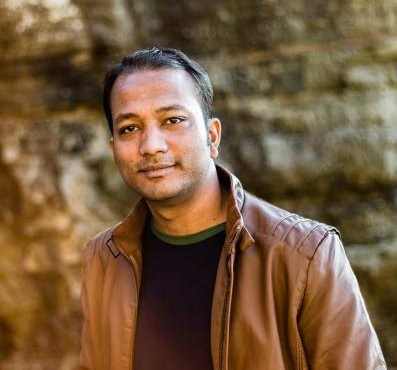MASTEAM Talk - Application-aware User-centric Programmable Architectures for 5G multi-tenant networks
- https://eetac.upc.edu/ca/esdeveniments/masteam-talks-rakibul-islam-rony-and-akshay-jain
- MASTEAM Talk - Application-aware User-centric Programmable Architectures for 5G multi-tenant networks
- 2018-05-02T17:30:00+02:00
- 2018-05-02T18:30:00+02:00
02/05/2018 de 17:30 a 18:30 (Europe/Madrid / UTC200)
C4-021B, EETAC, Campus Castelldefels UPC
The Master's degree in Applied Telecommunications and Engineering Management (MASTEAM) organizes a weekly series of activities (talks, technical visits, discussion pannels) that complement the academic activities with real-world experiences from companies, research centres and institutions in the main topics of the master: Internet of Things. Smart Cities, 5G mobile communications, Software-Defined Networking (SDN) and Radio (SDR), cloud computing, augmented reality and audiovisual services, among others.
May 2nd, 2018, 17:30h (duration 1h), Building C4, Classroom 021B, EETAC, Campus Castelldefels UPC. How to get there .
We will have two short talks from researchers from the Horizon 2020 5GAuRA project.

Speaker: Rakibul Islam Rony
Title: Resource efficient approaches to perform joint access and backhaul optimization in 5G networks
Abstract: 5G is preparing to meet thousand times system capacity, hundred times data rate and connected devices compared to Long Term Evolution (LTE). Ultra densification of cells is being considered as one of the best solution to meet such enormous demand. In such scenario, 5G will employ Centralized Radio Access Network (CRAN), where Fronthaul, the connecting link between central processor and access points will ask for a huge data rate. This stringent requirement limits the options for future FH and backhaul solutions, since wireless options are expected to dominate in the future transport network, which have the limitation in terms of capacity. Hence, the best utilization of backhaul/FH resources has to be guaranteed. Additionally, in 5G network, higher frequency bands will be employed by both the access and backhaul/FH networks to achieve the expected capacity. Thus, access and backhaul/FH networks cannot be considered as separate entities anymore, rather, the line between them has to be blurred to ensure the efficient use of scarce resources. In this talk, we focus on joint optimization of access and backhaul network, a resource efficient solution for the stated problem. Different approaches to perform such joint operation and future opportunities are discussed in this talk.
Bio: Rakibul Islam Rony is from Bangladesh, and he was born in 1986. He received his B.Sc. Engg degree from Islamic University of Technology (IUT), Bangladesh in 2008 and completed his M.Sc (Tech) in “Communications Engineering – Radio Communications” from Aalto University, Espoo, Finland in January, 2014. At the beginning of his career, he worked as “RF Engineer II” in Huawei Technologies Bangladesh ltd for two years (2009 – 2011). He started his master studies in November 2011 and worked as Research Assistant in Aalto University to carry out his master’s thesis. After completing his M.Sc, he worked as “Senior Lecturer” in the department of Electrical and Electronic Engineering (EEE) in Primeasia University, Bangladesh for two years (2014 – 2016). From June 2016 till October 2016 he served as “Assistant Professor” in Eastern University, EEE department. In November 2016, he started working as “Marie Curie Early Stage Researcher (ESR)” for H2020 project 5GAuRA, in the Department of Network Engineering of Universitat Politecnica de Catalunya (UPC), BarcelonaTECH. His research interest is focused on 5G, wireless communications, wireless technologies, backhaul, next generation wireless techniques, resource management and sharing, SDN.
Speaker: Akshay Jain
Title: "Basics of 5G Handover Signaling and Architectures: A 3GPP Release 15 Perspective"
Abstract: With the release of 5G-NR and Non-Standalone architecture in December 2017, 3GPP is swiftly moving towards release 15 where various nuts and bolts of the upcoming 5G technology will be frozen as standards. Amongst these standards will be strategies to perform handover not just within the 5G RAN but with 4G, 3G and 2G technologies as well, and not to forget the non-3GPP accesses (WiFi, etc.). And with an ultra-dense heterogeneous network predicted for 5G, handovers and their related signaling becomes a critical aspect. Hence, in this talk we will go over the basics of handover signaling and provide a perspective on the various handover scenarios specified by 3GPP. Further, we will take a look at the recent release 15 documents and discuss the handover signaling in certain scenarios that will be highly prevalent in 5G networks.
Bio: Akshay Jain received his B.Tech degree in Electronics and Communications engineering from S.V. National Institute of Technology, Surat, India in 2013. He also received his MS degree in Electrical and Computer Engineering from University of Florida, USA in 2015. Akshay, during the period of 2011-2013, was also the recipient of the prestigious Kishore Vaigyanik Protsahan Yojana (KVPY) fellowship awarded by the Dept. of Science and Technology, Govt. of India. Further, from July 2015 to September 2016, he was also the lead Communication systems engineer at a startup called Queen B Robotics in San Francisco, California, USA. Currently he is pursuing his Ph.D. degree in 5G communications at the Network Engineering department at Universitat Politècnica de Catalunya, Barcelona, Spain. He is also a Marie Curie Early Stage Researcher at the European Union Funded 5G-AURA project. Akshay’s current research interests include 5G, wireless networks, mobility management, optimization theory, numerical methods, machine learning, radars and array processing.
Comparteix: